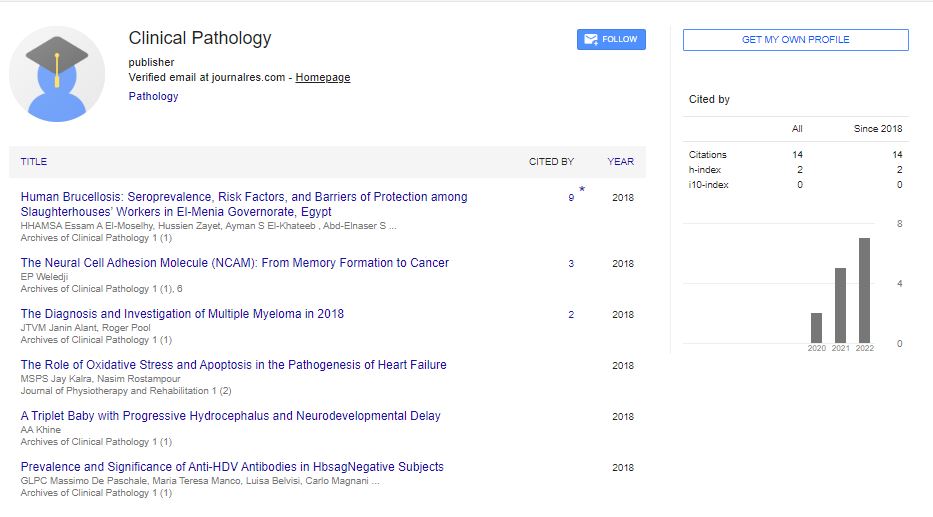Editorial, Arch Clin Pathol Vol: 4 Issue: 4
Relapsed or Primary Refractory AML: Moving Past MEC and FLAG-Ida
Rajesh Saladi*
Department of Hematology, University of Florida College of Hematology, Washington, United States
Keywords: Refractory AML
Editorial Note
Acute Myeloid Leukemia (AML) is a biologically heterogeneous disease of the hematopoietic system characterized by clonal accumulation and expansion of immature myeloid cells in the bone marrow. Unfortunately, with current treatment strategies, only approximately 35-40% of patients at least 60 years and 5-15% of patients older than 60 years are cured of this disease. Even with adaptation of cytogenetic and molecular risk-stratified therapies, 10-40% of patients does not achieve a Complete Remission (CR) after intensive induction therapy and are deemed to have primary refractory disease. Refractory disease is defined by the European Leukemia Net (ELN) as the inability to attain CR or complete remission with in complete hematologic recovery (CRi) after two courses of intensive induction treatment. Of note, this definition is not consistent throughout the literature. Although some patients are able to achieve CR, greater than 50% of these patients subsequently experience disease relapse. For patients who relapse, only a small fraction undergoes successful salvage treatment with ability to attain a second CR. Additionally, these patients are often not candidates for aggressive treatment given comorbid conditions and lack of suitable donors. Therefore, this leaves a large unmet clinical need for treatment of both relapsed and refractory (R/R) AML. Although the strategy of treating patients with AML has begun to move away from intensive chemotherapy regimens, as it stands now, cytotoxic chemotherapy still remains a cornerstone of treatment for R/R AML. However, significant energy and research has been devoted to improve upon their efficacy, ushering a new wave of novel chemotherapy combinations. Gemtuzumab ozogamicin was investigated in combination with cytarabine 1 g/m twice daily for 5 days (with or without other chemotherapies, including mitoxantrone, daunorubicin, or idarubicin) in patients with primary R/R CD33-positive AML. This study enrolled 58 patients and showed an ORR of 67%, with a median leukemia-free survival of 13.5 months and median OS of 50 months. Also under investigation is sirolimus, an mTOR inhibitor, combined with MEC. The study evaluated sirolimus combined with MEC in 51 patients with R/R AML, where the ORR was 47% in all comers, but 71% in the sirolimus sensitive group (compared to 20% in the resistant group). Ixazomib, a proteasome inhibitor, is FDA approved for multiple myeloma, but was combined with standard salvage regimen MEC in 30 patients with R/R AML. This phase I/II trial showed an ORR of 53% (16 patients with complete remission) and a median OS of 4.5 months in all patients, but a median OS of 11.1 months in patients who achieved a CR/CRi.
 Spanish
Spanish  Chinese
Chinese  Russian
Russian  German
German  French
French  Japanese
Japanese  Portuguese
Portuguese  Hindi
Hindi 